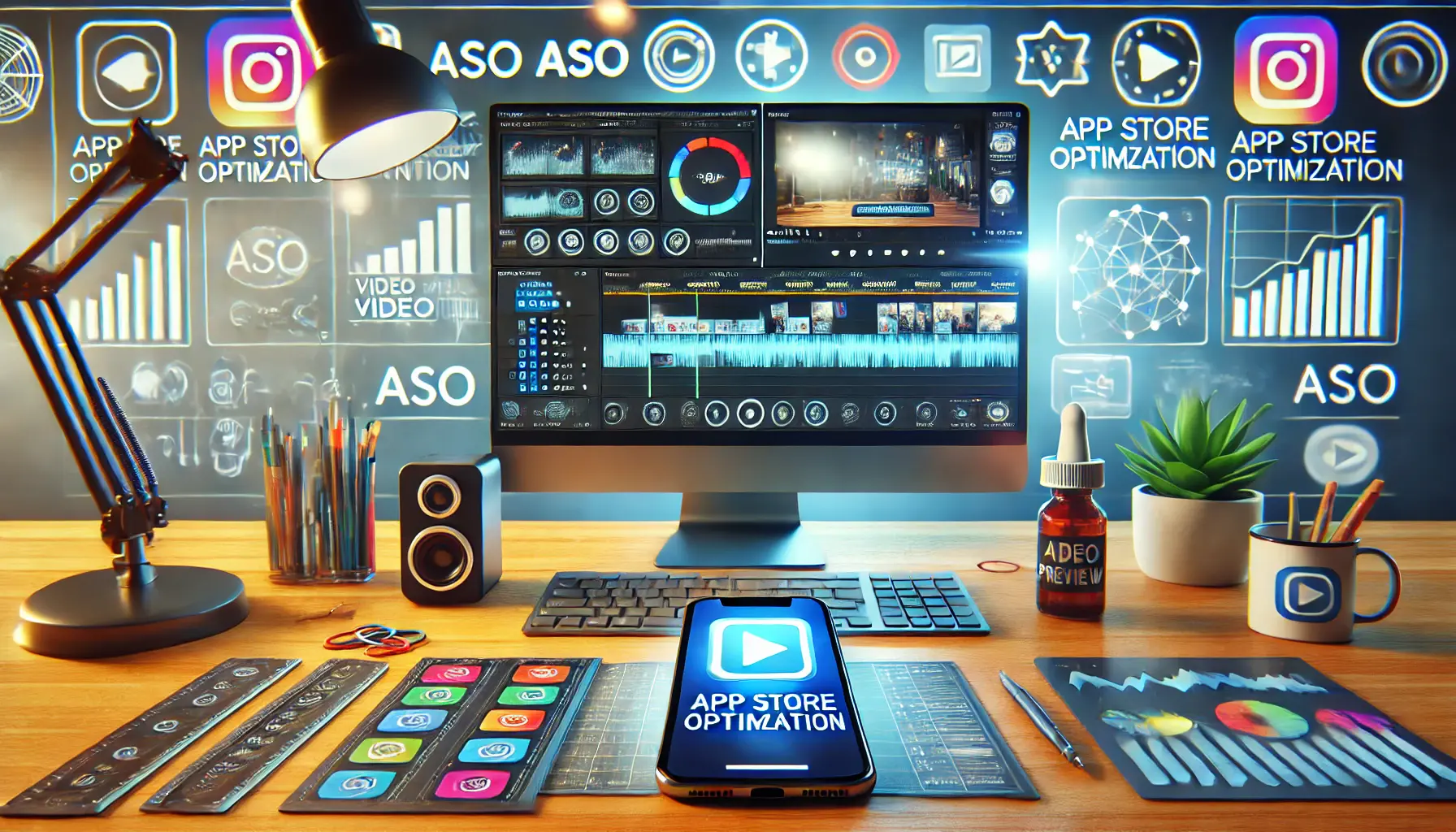In the digital age, the importance of visually appealing and culturally adaptive icons in app development cannot be overstated.
Icons are not just mere graphics; they play a crucial role in user interaction and the overall user experience.
They serve as the first point of contact between the app and its potential users, making their design critical for success in global markets.
The challenge of designing icons for global markets involves more than just creating visually appealing graphics; it requires a deep understanding of cultural nuances, symbolism, and usability principles.
This comprehensive approach ensures that icons are not only universally recognizable but also culturally sensitive, enhancing the user’s connection with the app.
- Understanding Iconography in App Development
- Global Market Considerations for Icon Design
- Design and Testing Process for Global Icons
- Technological Tools and Software for Icon Design
- Cultural Influences on Icon Perception
- Challenges in Designing for Global Markets
- Leveraging Global Icon Design for Brand Identity
- Empowering Global Connections Through Icon Design
- FAQs: Designing Icons for Global Markets
Understanding Iconography in App Development
Iconography, the study of symbols and their meanings, is fundamental in creating icons that resonate with a wide audience.
Icons in app development serve as a visual shorthand, conveying complex actions, features, or services in a simple, digestible manner.
The effectiveness of an icon is measured by its ability to communicate a message at a glance, transcending language barriers and enhancing the app’s intuitive use.
When designing icons for global markets, developers must consider various factors, such as color psychology, geometric shapes, and cultural symbols.
For instance, colors can evoke different emotions and meanings across cultures; red may signify danger in some cultures, while in others, it represents prosperity.
Similarly, certain symbols or gestures may be positive in one culture but offensive in another.
Understanding these nuances is crucial for developing icons that are both appealing and appropriate for international users.
Best Practices for Icon Design
To achieve success in global markets, following best practices in icon design is essential.
This includes simplicity, clarity, and consistency.
A simple design ensures that the icon is easily recognizable, even at small sizes or when viewed from a distance.
Clarity involves using distinct shapes and avoiding overly detailed images that can become lost or confusing on different devices.
Consistency across the app’s icon set promotes a cohesive user experience, reinforcing the app’s branding and making it easier for users to navigate.
Moreover, incorporating user feedback and conducting A/B testing can provide valuable insights into icon effectiveness.
This iterative process allows designers to refine icons based on real user interactions, ensuring that they are optimized for engagement and comprehension.
Incorporating cultural sensitivity and universal design principles into icon design is essential for reaching global audiences effectively.
Global Market Considerations for Icon Design
Designing icons for a global audience requires a nuanced approach that takes into account cultural, social, and linguistic differences.
To create icons that resonate universally, designers must consider several key factors that influence perception and usability across diverse user bases.
Cultural Sensitivity in Icons
Understanding the cultural context is paramount in creating icons that are accepted and understood by users worldwide.
Cultural sensitivity involves recognizing and respecting the symbols, colors, and imagery that have specific meanings in different cultures.
For instance:
- Color Usage: While green is associated with nature and growth in many cultures, it can represent illness in others. Researching color connotations can prevent unintended negative associations.
- Symbolism: Certain animals, plants, or objects may have cultural significance that varies from one region to another. For example, the owl is a symbol of wisdom in some Western cultures but is considered unlucky in others.
Localization of Icons
Localization extends beyond translation to include the adaptation of content and design to meet the cultural and linguistic expectations of the target audience.
For icons, this might mean:
- Adjusting the imagery to reflect local customs, traditions, or landmarks that are more relatable to the regional users.
- Considering the directionality of text and symbols, especially in languages that read right-to-left, such as Arabic or Hebrew.
Universal Design Principles
To ensure icons are accessible and usable by as broad an audience as possible, incorporating universal design principles is crucial.
This includes:
- Simplicity: Keeping icons simple and focused on a single concept enhances recognition and understanding.
- Consistency: Using a consistent style and visual language across all icons in an app improves user navigation and lowers the learning curve.
- Scalability: Ensuring icons maintain clarity and legibility across different sizes and resolutions supports usability on various devices.
Adapting icons for global markets is not just about avoiding cultural missteps; it’s about actively creating a welcoming and inclusive user experience for everyone, regardless of their background.
Design and Testing Process for Global Icons
The design and testing process for creating icons that cater to global markets involves several stages.
Each stage aims to refine the icons to ensure they are intuitive, recognizable, and culturally appropriate across different regions.
By systematically addressing each phase, designers can develop icons that enhance the user experience and support the app’s global success.
Conceptualization and Initial Design
The first step in the design process involves brainstorming and sketching initial ideas.
This phase is crucial for exploring various concepts and determining how best to represent an app’s features universally.
Designers should:
- Research global design trends to gather inspiration and identify universally recognized symbols.
- Collaborate with cross-cultural teams to gain insights into different cultural perspectives and preferences.
- Create multiple icon drafts, focusing on conveying the function or feature clearly through visual means.
User Feedback and Iteration
Incorporating user feedback early and often is essential in refining icons to meet global standards.
This involves:
- Conducting surveys or focus groups with a diverse set of users to gather initial reactions and suggestions for improvement.
- Utilizing online platforms to reach international users and obtain a wide range of cultural feedback.
- Iterating on the design based on feedback, which may include simplifying complex icons or altering culturally specific elements.
A/B Testing for Effectiveness
A/B testing plays a pivotal role in determining the most effective icon designs.
This quantitative testing method involves:
- Creating variations of icons with slight differences in design, color, or symbolism.
- Randomly presenting these variations to users within the same demographic or region.
- Analyzing which version performs better in terms of recognition, engagement, and user satisfaction.
Final Validation and Scalability
Before finalizing the icons, validating their effectiveness across various platforms and devices is crucial.
This ensures that the icons:
- Are legible and maintain their integrity on different screen sizes and resolutions.
- Align with the overall design language of the app, providing a seamless user experience.
- Are flexible enough to be updated or localized for specific markets without losing their core identity.
Effective icon design for global markets is a cyclical process that benefits from continuous refinement, user involvement, and adaptability to cultural trends and technological advances.
Technological Tools and Software for Icon Design
In today’s digital age, a plethora of technological tools and software are available to assist designers in creating effective icons for global markets.
These tools not only offer advanced features for crafting visually appealing designs but also facilitate collaboration among team members from different cultural backgrounds, ensuring a diverse and inclusive design process.
Vector Graphics Editors
Vector graphics editors are essential for designing icons, as they allow for scalable designs that retain their clarity across various screen sizes and resolutions.
Popular options include:
- Adobe Illustrator: Known for its comprehensive toolset, Illustrator is favored by professionals for creating high-quality vector artwork.
- Sketch: With a focus on digital design, Sketch offers an intuitive interface and collaborative features specifically tailored for app and web design.
- Inkscape: As a free, open-source alternative, Inkscape provides a solid vector editing platform suitable for designers on a budget.
Collaboration and Feedback Tools
Collaboration and feedback tools are crucial for involving users and team members in the design process, especially when working on icons for a global audience.
Tools like Figma and InVision enable:
- Real-time collaboration, allowing teams to work together seamlessly, regardless of location.
- Easy sharing of design prototypes with users for feedback, facilitating a user-centered design approach.
- Integration with other design and project management tools, streamlining the workflow.
Icon Management and Testing Platforms
Managing and testing a library of icons for global use requires specialized platforms that can handle the complexity of different versions and localizations.
Platforms such as IconJar and Glyphs provide:
- Organizational features for categorizing and accessing icons efficiently.
- Tools for exporting icons in various formats and sizes, ensuring compatibility with different devices and platforms.
- Capabilities for testing icons in mock-up environments, helping designers see how icons appear in real-world applications.
Choosing the right technological tools and software can significantly enhance the efficiency and effectiveness of the icon design process, enabling designers to create icons that resonate with global audiences.
Cultural Influences on Icon Perception
The perception of icons across different cultures is influenced by a myriad of factors, ranging from historical traditions to contemporary societal norms.
Understanding these cultural influences is critical for designers aiming to create icons that are not only visually appealing but also culturally resonant and inclusive.
This understanding ensures that icons will be interpreted correctly and positively by users around the globe.
Historical and Symbolic Meanings
Many cultures have rich histories and symbolic systems that can deeply affect the interpretation of visual elements, including icons.
For instance:
- In some Eastern cultures, dragons are seen as symbols of power and good luck, while in Western cultures, they may be associated with danger or evil.
- The color white is traditionally associated with purity and weddings in Western cultures, but it is often associated with mourning and funerals in many Eastern cultures.
Such differences highlight the importance of researching and understanding the historical and symbolic meanings of elements used in icon design to avoid misinterpretation or offense.
Contemporary Cultural Trends
Alongside historical influences, contemporary cultural trends also play a significant role in icon perception.
Trends can be influenced by current events, popular culture, and the global spread of information through the internet.
For example:
- Global events such as the Olympics or World Cup can temporarily influence iconography, with symbols related to these events gaining universal recognition.
- Technological advancements and the prevalence of social media can lead to the rapid spread of new symbols and meanings across cultures.
Staying attuned to these trends allows designers to create icons that are relevant and appealing to a broad audience, enhancing user engagement and acceptance.
Understanding and respecting cultural influences on icon perception is essential for creating designs that are both globally appealing and locally appropriate, fostering a sense of inclusivity and respect for diverse user groups.
Challenges in Designing for Global Markets
Designing icons for global markets presents a unique set of challenges that require a nuanced understanding of cultural diversity, technological constraints, and user behavior.
These challenges highlight the complexity of creating icons that are universally understandable while respecting cultural specifics.
Addressing Cultural Diversity
The vast diversity of cultures around the world means that a design element that is clear and positive in one culture might be ambiguous or even offensive in another.
Designers must navigate:
- Varied interpretations of colors, symbols, and gestures, which can differ significantly across cultures.
- The balance between universal appeal and cultural specificity to ensure icons are both globally recognizable and locally relevant.
- The need for extensive research and consultation with cultural experts to avoid unintended cultural insensitivities.
Technological and Platform Constraints
Icons must be designed to be functional and legible across a wide range of devices and platforms, each with its own technical specifications and limitations.
Challenges include:
- Ensuring icons scale effectively across different screen sizes and resolutions without losing clarity or detail.
- Adapting designs for different operating systems and user interfaces, which may have distinct design guidelines and requirements.
- Updating icons to keep pace with technological advancements and changes in platform standards.
User Experience and Usability
Ultimately, icons play a crucial role in the user experience, guiding interactions and facilitating navigation.
Designers face the challenge of:
- Creating intuitive icons that users can understand and engage with at a glance, regardless of their cultural background or technological proficiency.
- Maintaining consistency in icon design to support coherent and intuitive user interfaces across the app or digital platform.
- Continuously testing and refining icons based on user feedback and behavior analysis to ensure they remain effective and user-friendly over time.
Navigating the challenges of designing for global markets requires a thoughtful and informed approach, balancing universal design principles with cultural sensitivity and user-centric design practices.
Leveraging Global Icon Design for Brand Identity
Icons are not just functional elements within an app; they also play a crucial role in establishing and promoting brand identity on a global scale.
Well-designed icons can convey a brand’s values, personality, and uniqueness, helping to differentiate it in a crowded marketplace and foster a deep connection with users worldwide.
Conveying Brand Values and Personality
Every brand has a set of core values and a personality that it seeks to communicate to its audience.
Icons serve as a visual language that can express these aspects effectively.
For example:
- A brand emphasizing innovation might use sleek, forward-looking icon designs that reflect cutting-edge technology.
- A brand focusing on environmental sustainability might incorporate natural motifs and green color schemes into its icons.
By thoughtfully designing icons that resonate with the brand’s identity, companies can reinforce their message and values at every user interaction.
Enhancing Global Brand Recognition
In the global market, brand recognition is crucial for attracting and retaining users.
Icons that are distinctive, memorable, and consistent across different platforms and languages can significantly enhance a brand’s visibility and recognition.
Strategies include:
- Developing a unique icon style or motif that becomes synonymous with the brand, making it easily recognizable even without text.
- Ensuring consistency in icon design across all user touchpoints, from mobile apps to web platforms and marketing materials, to build a cohesive brand image.
This consistent visual identity helps to create a strong brand presence that can transcend cultural and linguistic barriers, fostering global brand loyalty.
Adapting Icons for Local Markets
While maintaining a coherent brand identity is essential, adapting icons for local markets can further enhance user engagement and brand affinity.
Localization of icons involves:
- Modifying design elements to align with local cultural preferences and symbolism, making the brand feel more accessible and relevant to local users.
- Incorporating local colors, patterns, or imagery to reflect the brand’s commitment to serving and understanding its diverse global audience.
Such localization efforts demonstrate a brand’s respect for cultural diversity and its dedication to providing a personalized and inclusive user experience.
Effective global icon design is a powerful tool for building and reinforcing brand identity, offering brands a unique opportunity to connect with users around the world while respecting and celebrating cultural diversity.
Empowering Global Connections Through Icon Design
As we have explored throughout this article, designing icons for global markets is a multifaceted challenge that requires a deep understanding of cultural nuances, technological considerations, and brand identity.
Icons, as the visual ambassadors of an app, carry the weighty responsibility of transcending linguistic barriers and connecting with users on a universal level.
The journey from conceptualization to the final design of icons is a testament to the importance of empathy, research, and adaptability in the quest to create a truly global user experience.
Key Takeaways for Designing Icons for Global Markets
Reflecting on the insights shared, several key takeaways emerge for designers and brands aiming to capture the essence of global connectivity through icon design:
- Understanding and respecting cultural differences is paramount in creating icons that are both appealing and appropriate across diverse user bases.
- Embracing technological tools and platforms can streamline the design process, fostering collaboration and ensuring icons remain consistent and scalable across devices.
- Engaging with users through feedback and testing is critical to refining icons that are intuitive, recognizable, and resonate with global audiences.
The Role of Icons in Building a Universal Brand Language
In the digital ecosystem, where competition is fierce and attention spans are short, icons serve as a silent yet powerful language that brands can leverage to communicate their identity and values.
The strategic design of icons for global markets not only enhances user engagement but also reinforces brand presence across borders.
By adopting a user-centric approach and prioritizing inclusivity, brands can foster a sense of belonging and loyalty among users, regardless of their cultural background.
Looking Forward: Icons for Global Markets
Looking ahead, the importance of designing icons for global markets will only continue to grow as digital platforms become increasingly accessible worldwide.
The challenge for designers and brands will be to stay ahead of the curve, continuously innovating and adapting to the ever-changing landscape of global user expectations.
By committing to cultural sensitivity, embracing technological advancements, and prioritizing user experience, the design of icons will continue to be a critical element in the global success of apps and digital platforms.
In conclusion, the art of designing icons for global markets is a delicate balance between universality and specificity, technology and creativity, brand identity and user inclusivity.
As the digital world becomes more interconnected, the ability to communicate effectively through icons will remain a cornerstone of global user engagement and brand recognition.
Boost your mobile app's success with our guaranteed App Store Optimization (ASO) service. Leave it to the experts!
FAQs: Designing Icons for Global Markets
Explore common queries about creating universally appealing icons tailored for global audiences.
Effective icon design hinges on simplicity, recognizability, consistency, and cultural sensitivity to ensure universal comprehension and appeal.
Colors carry cultural significances and emotional cues, making thoughtful selection essential for global acceptance and brand alignment.
Consistency ensures a cohesive user experience, strengthens brand identity, and aids in intuitive navigation across various digital platforms.
Cultural sensitivity avoids misinterpretation and offense, ensuring icons are appropriately received by diverse global audiences.
Testing involves A/B comparisons, user feedback from diverse cultural backgrounds, and usability studies to refine icons for broad appeal.
Yes, well-designed icons can significantly enhance UX by providing intuitive navigation cues and improving aesthetic appeal.
Local adaptation involves modifying design elements to reflect cultural preferences, traditions, and symbols relevant to each market.
Vector graphics editors like Adobe Illustrator, collaborative platforms like Figma, and icon management tools such as IconJar are highly recommended.






